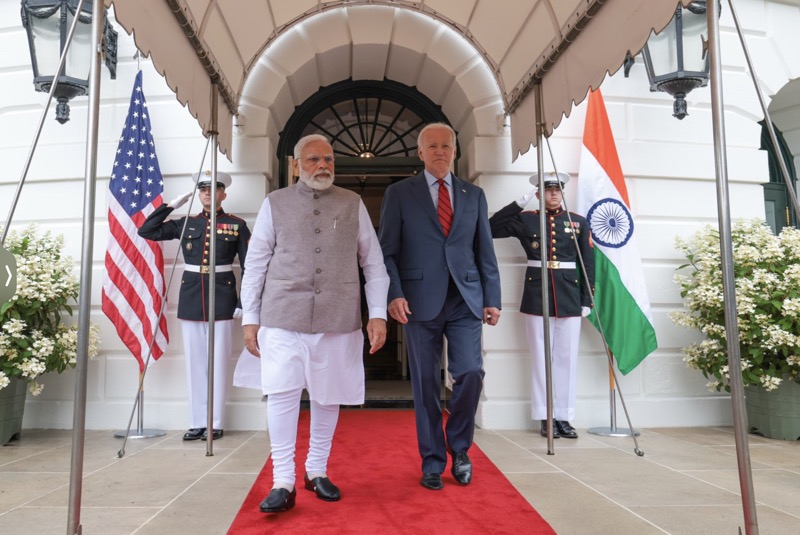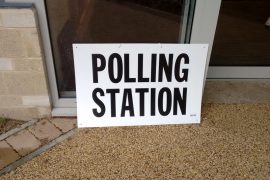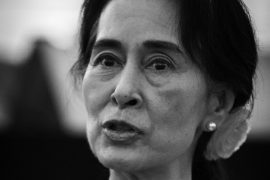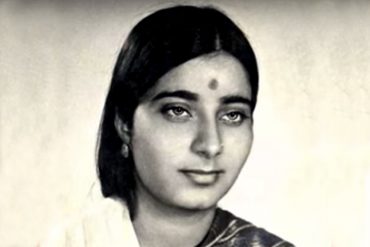India’s Prime Minister Narendra Modi’s ‘state visit’ to the United States of America from 21 to 23 of June is by all accounts a study in glitz and glamour engineered by the Biden Administration with the First Lady Jill Biden playing a leading role. The Friends of BJP in America exerted their utmost by marching up and down in the cities and by shouting “Modi! Modi!” even when he addressed the Joint Session of the Congress. The media coverage in India was non-stop and irritatingly repetitive. The U.S. media took more notice of Modi this time than during his previous visits.
Modi’s last two visits were in September 2019 and September 2021. In 2019, Modi’s supporters in America had arranged for a rally in Houston, Texas, with President Trump in attendance. Violating protocol, Modi exhorted the audience to vote for Trump again in 2020. President Biden does no longer hold it against Modi. It seems Washington has assessed Modi is going to be re-elected in 2024 and therefore, it is prudent to invest in him.
All successful summits are pre-cooked. Washington sent its senior officials including the Secretary of State, Secretary of Defence, and National Security Advisor, to Delhi prior to the visit. It appears that Washington has worked harder than Delhi to complete the cooking on time.
There was no matter of importance that the two principals had to discuss and resolve differences — if any. That done, they could focus on praising each other, propounding their aspirations, and projecting their world view as they wanted to be projected.
The joint statement — of 6466 words in 58 paragraphs — is one of the longest of its kind. The previous one in June 2016, when Modi was hosted by Obama, had 3771 words. The one issued on President Macron’s visit in 2022 December was only 3254 words.
The joint statement is a study in soaring rhetoric. The two nations ostensibly are “among the closest partners in the world.” The pointed reference to the growing number of Indo-American voters is evident when it says, “The U.S.-India Comprehensive Global and Strategic Partnership is anchored in a new level of trust and mutual understanding and enriched by the warm bonds of family and friendship that inextricably link our countries together.” (Italics added.) Modi has emphasised time and again that he had discarded the hesitations in the past.
Leaving aside the rhetoric, let us look at the concrete items announced in the joint statement.
First: NASA and ISRO will develop a strategic framework for human spaceflight cooperation by the end of 2023.
Second: a Memorandum of Understanding (MoU) has been signed on a Semiconductor Supply Chain and Innovation Partnership. Micron Technology will invest up to $825 million to build a new semiconductor assembly and test facility in India at a cost of $2.75 billion, with India bearing the rest of the cost.
The project will create 20,000 jobs. Another US company Lam Research plans to train 60,000 Indian engineers in semiconductors. Applied Materials, yet another U.S. company, will invest $400 million. All told, the total works out to $3.15 billion out of which India will invest $1.9 billion.
Third: two task forces were created to work together on telecommunications including 5G and 6G, and digital inclusion.
Fourth: a joint Indo-U.S. Quantum Coordination Mechanism has been established.
Fifth: the U.S. National Science Foundation and the Indian Department of Science and Technology will cooperate on 35 research projects.
Sixth: the leaders welcomed Google’s plans to invest $10 billion in the India Digitization Fund. By doing this, Modi has paved the way to turn India into Google’s digital colony.
An observation is called for. In some cases, a firm decision has been taken at the government level whereas in other cases, the two leaders are encouraging the U.S. investors for decisions already taken or yet to be taken.
The most important MoU is the one between General Electric and Hindustan Aeronautics Ltd (HAL) for the manufacture of GE F-414 jet engines in India.
Two things are worthy of notice. This shows the beginning of the end of the technology denying policy towards India. This technology has not been shared with any other country so far.
The second point to note is that the joint venture is with the HAL, much maligned in the media for incompetence and non-delivery when Modi compelled the French company selling the Rafael aircraft to join up with the Ambani company with no competence in the matter. Perhaps, the US might have insisted on HAL as partner. Perhaps Modi has learnt from his mistake?
Incidentally, Adani was not invited to the White House banquet. Once again, we might conclude that Modi can learn.
Coming to the political part of the joint statement, we see that Modi has given away nothing of importance. The reference to Ukraine avoids any criticism of Russia. The call for respect for international law, U N Charter and territorial integrity and sovereignty is not linked with any specific reference to Ukraine.
On Security Council reform, Biden supports India’s bid for a permanent seat and specifically supported India’s candidature for a non-permanent seat for the 2028-29 term.
The formulation on Quad as “a global good” avoids any reference to China. Washington would have welcomed an anti-China formulation; the formulation on the Indo-Pacific also avoids any direct reference to China.
Paragraph 36 says that the two countries “reaffirm and embrace their shared values of freedom, democracy, human rights, inclusion, pluralism and equal opportunities for all citizens.”
In this context, we need to note that seventy-five members of the Congress wrote to Biden on 20 June – one day before Modi’s arrival. The initiative for writing the letter was taken by Senator Chris Van Hollen and Congresswoman Pramila Jayapal, both Democrats. It said that there have been “independent, credible reports” that reflect “troubling signs in India toward the shrinking of political space, the rise of religious intolerance, the targeting of civil society organizations and journalists, and growing restrictions on press freedoms and internet access.” Biden was urged to take up the matter with Modi.
Biden did not bring up the matter during the official talks. Obviously, the claim in the joint statement about advancing “the aspirations of our people for a bright and prosperous future grounded in respect for human rights, and shared principles of democracy, freedom, and the rule of law” is not to be taken seriously as pointed out by American commentators. For example, in an article in Foreign Affairs (June 16, 2023) by Professor Daniel Markey says:
If making democratic values the cornerstone of the U.S.-Indian relationship has always been a dubious strategy, today it is clearly doomed—because the very notion of common values has itself come to look fanciful. Ever since Narendra Modi became the Indian prime minister nine years ago, India’s status as a democracy has become increasingly suspect.
The “world’s largest democracy” has seen an upsurge in violence directed at its Muslim minority, often whipped up by prominent politicians. It is trying to strip citizenship from millions of Muslim residents. It is muzzling the press and silencing opposition figures. The Biden administration, having cast itself as a vocal champion of democratic ideals, therefore finds itself on shaky ground whenever it characterizes the United States’ partnership with India as one of shared values.”
The TIME magazine (24 June, 2023) carries an article by Knox Thames under the caption: The Biden-Modi Meeting Was a Failure for Democracy.
Modi answered a question on treatment of minorities, specifically, Muslims, from Sabrina Siddique, a journalist working for the Wall Street Journal by using disingenuous rhetoric. Contrary to the usual practice, no follow-up question was permitted. Even agreeing to the joint press conference was treated by Biden as a generous concession by the media-averse Modi.
Modi repeatedly referred to India being the fifth largest economy; conveniently, he left out the fact that India accounts for the largest number of poor human beings too.
It will be naïve to believe that Biden honestly believes that he sees Modi as a credible collaborator for promoting democracy and human rights. It does not matter for Biden as he does not care about India’s democracy. He cares about American interests.
Clearly, by hosting an event that could help boost Modi’s popularity in an election year, Biden and the U.S. administration are using India as a pawn to negate Chinese influence on the geopolitical chess board.
Furthermore, by deepening the defence relationship, Biden hopes he might succeed in reducing India’s dependence on Russia for arms — at least over a span of 5 to 10 years.
However, it will not be in India’s interest to have a tight embrace with the U.S. Such an embrace can prove to be asphyxiating. It is better to shake hands rather than embrace. A deeper defence dependence with the U.S. will constrain India’s options. Such a move will be foolhardy.
-30-
Copyright©Madras Courier, All Rights Reserved. You may share using our article tools. Please don't cut articles from madrascourier.com and redistribute by email, post to the web, mobile phone or social media.Please send in your feed back and comments to [email protected]











